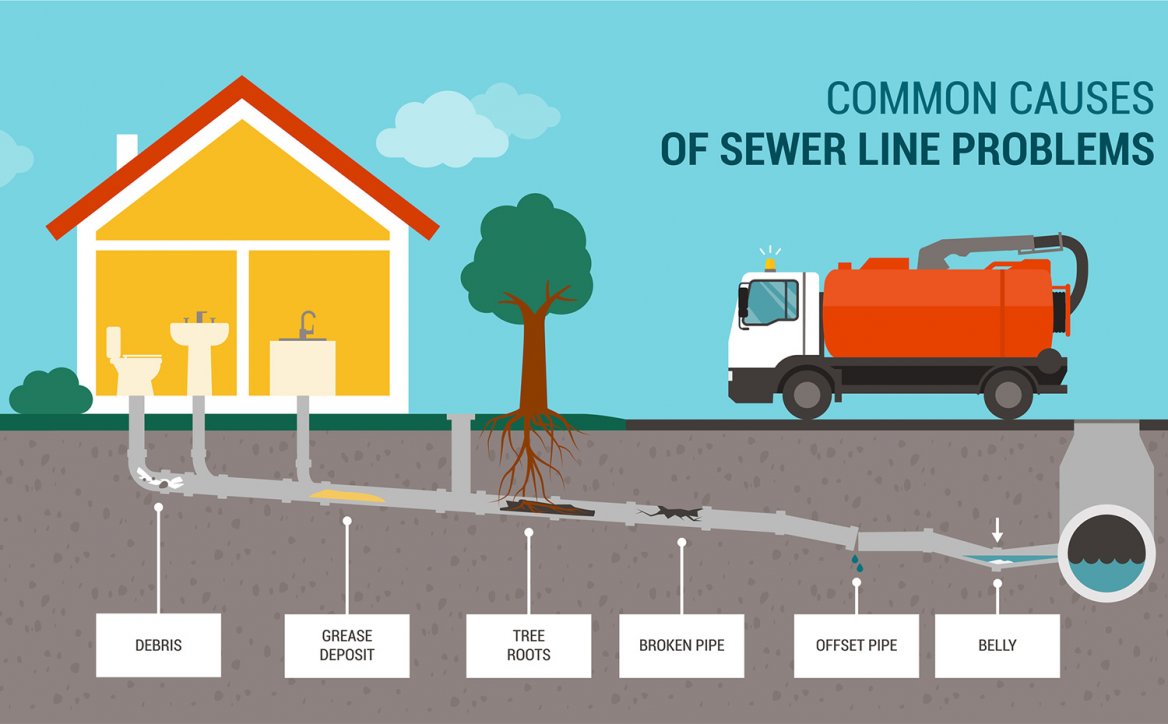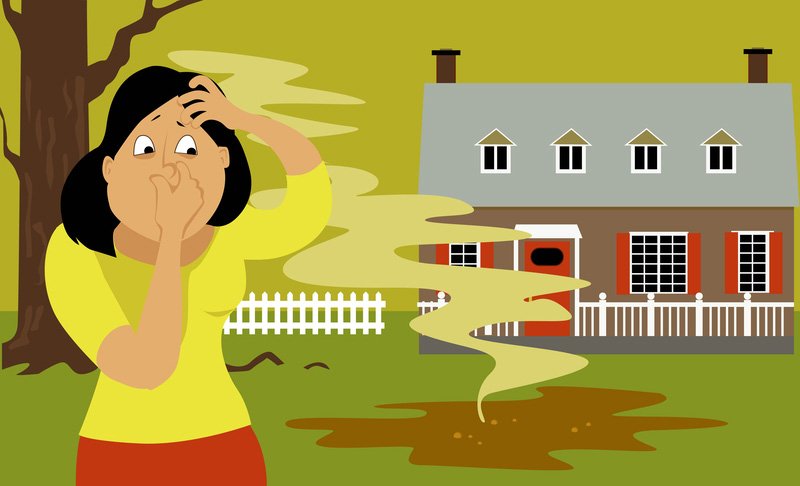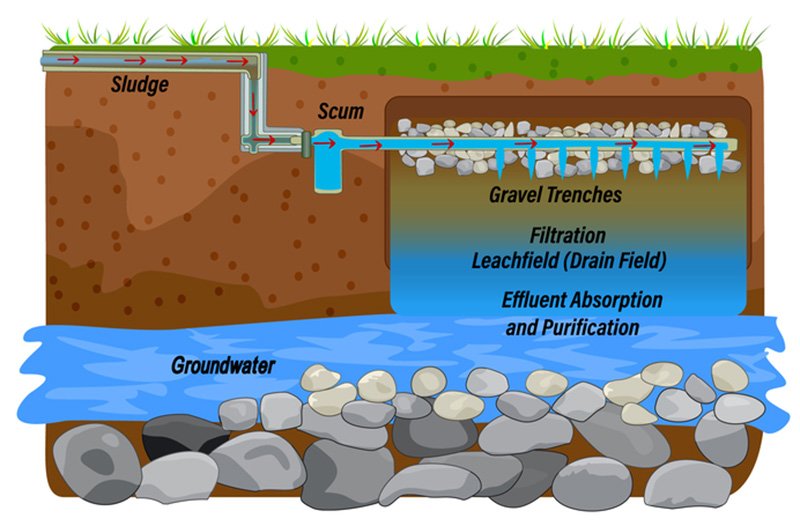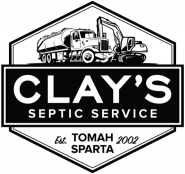Resources
How does a septic system work?
.jpg)
- All of the wastewater from your home flows out through a main pipe and into your septic tank.
- The septic tank is a sealed, underground container that temporarily holds the wastewater. It allows solids to settle at the bottom as sludge, while lighter materials like oils and grease float to the top, forming a layer known as scum.
- In traditional septic systems, the liquid that remains flows out of the tank and is evenly distributed into the drainfield through a network of pipes.
- A drainfield (also known as a leach field or absorption field) is a critical part of a septic system. It is a network of perforated pipes laid in gravel-filled trenches or beds beneath the ground.
- Once the wastewater reaches the drainfield, it filters through the soil, which naturally helps clean it by removing harmful bacteria, viruses, and some nutrients. Excessive water in the drainfield can cause it to flood, which may result in sewage rising to the surface or backing up into your home's plumbing.
How can I be sure that my septic system is working correctly?
Much like your furnace, a septic system can be costly to fix or replace, so it's important to keep it in good working condition. To stay ahead of potential problems, it's recommended to have one of our licensed technicians inspect your system. During a septic inspection, the technician will evaluate the following:

- Records of past pumping and maintenance
- The system's age and overall condition
- Levels of sludge and scum inside the tank
- Possible leaks, such as unusually low water levels in the tank
- Evidence of backups, like discoloration around the outlet pipe
- The structural condition of the tank, inlet, and outlet pipes
- The drainfield, checking for failure signs like standing water
- The distribution box, to ensure wastewater is being evenly directed to each drain line
- System documentation, to confirm the system meets local requirements for placement and performance
How Can I Tell if My Septic System Is Failing? What Should I Do?

Certain warning signs may indicate your system isn't working the way it should. If you notice any of the following, contact Clay's Septic Service right away–quick action can save you thousands in repairs:
- Wastewater backing up into toilets, sinks, or tubs
- Gurgling sounds coming from household drains
- A strong sewage odor around the tank or drainfield
- Bright green, lush, or soggy grass over the drainfield–even during dry weather
When properly maintained, your septic system can continue to function reliably for many years.
How Can I Help Maintain My Septic System?
A well-maintained septic system typically lasts between 15 and 40 years–and with proper care, it can last even longer.
Be Mindful of What Goes Down the Drain:
Everything you flush or pour down the sink affects your septic system. Many household items can clog pipes or harm the helpful bacteria that break down waste.
- Avoid flushing or draining clogging materials: Baby wipes, diapers, cat litter, feminine hygiene products, cigarette butts, coffee grounds, cooking grease, and fats.
- Keep harmful chemicals out of your system. These can kill the bacteria your system needs to function: Antibacterial soaps, harsh cleaning agents (bleach), motor oil, pesticides, paint, gasoline, antifreeze.

Protect Your Drainfield:
Your drainfield plays a crucial role in treating and dispersing wastewater.
- Keep vehicles, heavy equipment, and trailers off the area.
- Avoid planting trees or shrubs nearby or on your drainfield–roots can invade and block pipes.
- Direct rainwater, irrigation, and other runoff away from the drainfield.
- Limit or avoid the use of a garbage disposal, which adds grease and solids to your system.


Use Water Wisely:
The less water your household uses, the easier it is for your septic system to manage.
- Space out laundry, dishwasher, and shower use throughout the week.
- Install high-efficiency toilets and showerheads
- Fix any plumbing leaks right away
What else can I do to help maintain my system?
Regular maintenance is key to keeping your septic system working properly and avoiding costly repairs. A standard system should be inspected every three years by a licensed septic service provider. Based on the inspection results and local requirements, your tank may need to be pumped every 3 to 5 years.
Think of it like routine car maintenance–just as changing your oil helps extend the life of your engine, regular septic system care can help your system last for decades, often at a much lower cost than replacing the entire system.
For more information, please visit the United States Environmental Protection Agency website at epa.gov
